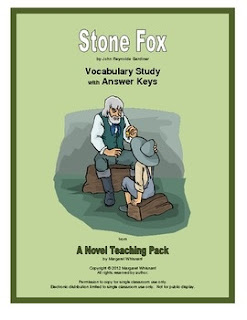VOCABULARY
There are 4 types of Vocabulary that we discussed in our Reading Education 530 course.
They are:
1) ORAL - words we understand when someone reads them aloud
2) PRINT - words we understand when we read
3) RECEPTIVE - words we understand when we listen or read
4) PRODUCTIVE - words we understand well enough to use in our speech or our writing
Every student in your classroom will fall into one of these categories. It is important to see where they are and find activities that will help them grow and expand their vocabulary.
Here is a list of some fun and useful ideas to help teach vocabulary in the classroom.
Dress It
Up With a Vocabulary Parade!
My former school held an annual
character book parade on Halloween. The premise sounded great: kids dressed up
like characters from a book, but one year something smelled fishy as I watched
the book parade. This was still a Halloween parade with a strained tie to some book, and I knew we could
create a stronger tribute for bibliophiles. Thanks to Debra Frasier, author of Miss Alaineus: A Vocabulary Disaster, we
found a solution that is fun, cheap, and involves everyone!
Miss Alaineus: A Vocabulary Disaster, by Debra Frasier
An
excerpt from Debra Frasier's Web page: "A hilarious
romp through the usually not-so-funny world of vocabulary. Sage misses school
due to a cold and from there the misunderstanding begins. But
"miscellaneous" is finally revealed for the word it truly is, and
Sage manages to redeem herself in a marvelous and inspiring creative
leap."
The Premise of a Word Parade
Dress up like a vocabulary word and
create a word parade with your class or school. It's as simple as that. Some
construction paper and string can get you from start to finish in no time. Here
is a simple example:
Parallel
Take two longer rectangular pieces of
construction paper. Punch holes at the top. Loop together and hang around your
neck. Write the word "parallel" on each strip. Done.
Price:
Free!
Educational
value: Priceless!
The beauty of this project is that:
1) It can
be completed anytime of year. Halloween is an easy place to plug this in.
2) It can
tie into Halloween costumes. For example, students can be "gruesome"
or "ghastly."
3) Students learn new words from each other.
3) Students learn new words from each other.
4) It gives
all children a chance to participate. Before we did this, half my class dressed
up and the other half didn't. I expect most, if not all, to participate this
year.
5) It is
academically focused.
Show
Not Tell
It is easier for me to show you than to
tell you. Here are some of the examples we found on Debra Frasier's page and in our classroom
(below).
Wrapping
It Up
When we
return to the classroom, each student shares their outfit and we talk about the
meaning of the word. After going around the room, we vote on our top three
favorite costumes.
http://www.scholastic.com/teachers/top-teaching/2010/10/dress-it-vocabulary-parade
Synonym Poster Template
This word bank focuses on word structures (synonyms) created by the teacher and student. Vocabulary activities that teach not only referential vocabulary (what words mean) but also relational vocabulary (how words relate to each other) are essential to supporting reading comprehension and making connections in general.
This word bank focuses on word structures (synonyms) created by the teacher and student. Vocabulary activities that teach not only referential vocabulary (what words mean) but also relational vocabulary (how words relate to each other) are essential to supporting reading comprehension and making connections in general.
Wonder Words Poster
Our
Wonder Words Template
(enlarged) provides students the opportunity to place words they understand
when they are reading. Students are provided with opportunities during
the day to discuss their word with others as we try different strategies to
figure it's meaning. One of our students' favorite vocabulary activities.
Tons of Vocabulary Related Activities and Ideas
Make a VOCABULARY TREE or a WORD TREE!
As they learn new words, they can use what they have learned to build more words. This activity will help them make connections with other words.
This is a poster of our Reading Education 530 class
practicing the word tree activity.
This includes 84 language arts vocabulary cards perfect for a pocket chart or word wall. They are even color coded!
http://www.teacherspayteachers.com/Product/Language-Arts-Vocabulary-Cards-1st-Grade-Common-Core-347124
Stone Fox: Vocabulary Study
This will be great for my 3rd graders.
We read this chapter book together every year.
This is a great form to use during guided reading.
It could be used in a small group setting or
it can be completed individually.
It was used in Social Studies in the example,
but will be helpful in any subject.
I love this anchor chart! Will be a great tool for the Daily 5 whole group lesson.
http://media-cache-ak0.pinimg.com/originals/7a/0c/30/7a0c30d2d6b2ba3785498515916e1ab6.jpg
Template for vocabulary word study
This is a great site for educational games. Common core aligned ones, too.










No comments:
Post a Comment